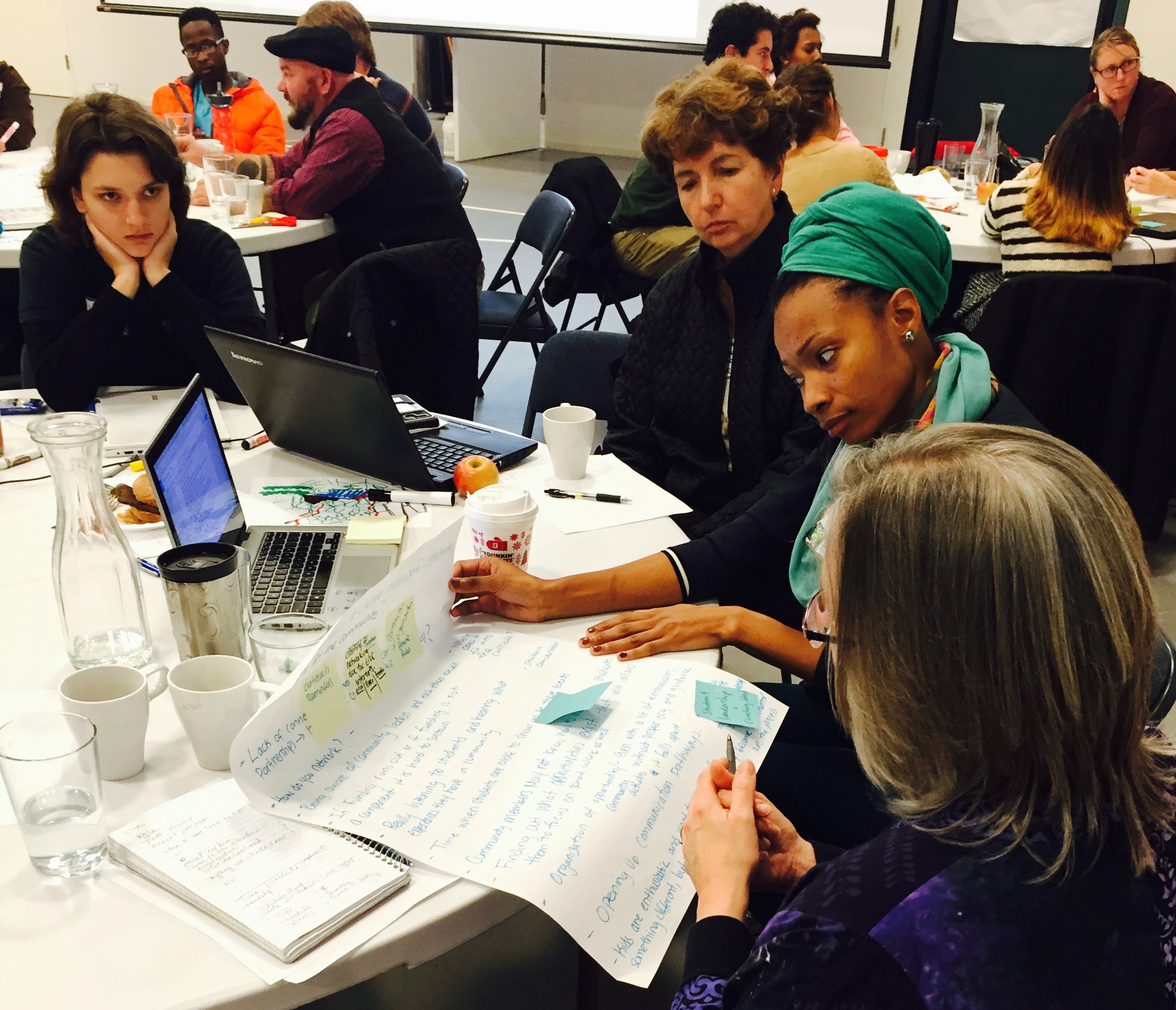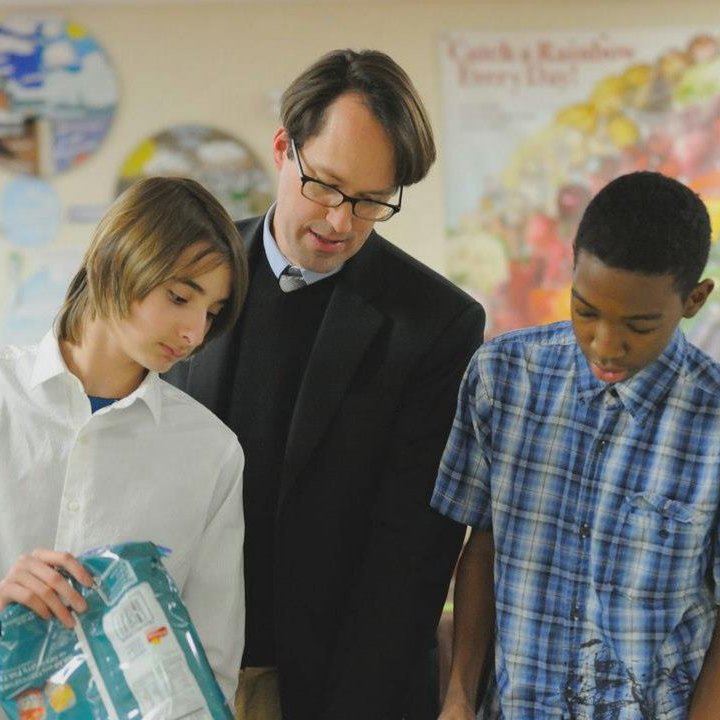_1_0_0_0_0_0_0_0_0_0_0_0_0_0_0_0.jpg)
Last week, Keilly Solano -- a Common Ground High School senior -- took the mic at the front of a room full of classroom teachers, young people, and school leaders from across the Northeast United States. She described her journey from a shy and inward-looking freshman to a senior who’s organizing peers, leading workshops that help other young people find their voice, and pushing to make Common Ground’s staff more reflective of the racial diversity of their student body.
The visiting educators leaned in, asking Keilly what allowed her to find this sense of purpose and power. The summer after sophomore year, Keilly took on a paid job doing door-to-door outreach for New Haven’s mobile farm market -- working with an experienced organizer to engage community members in conversations about food justice. Junior year, she took a drama class, and worked alongside professional actors from the Elm Shakespeare Company -- learning to try on new roles, to raise her voice. As a senior, she’s assembling a portfolio that shows her growth as a community leader, and doing the background research for her senior project -- which she plans to focus on making Common Ground’s curriculum more relevant and engaging for our racially diverse student body.
“The key,” says Keilly, “is that you start by creating relationships, getting to know your students and letting them know you. You have to start with what students care about.”
Keilly’s story helped to launch a year-long collaboration -- bringing together six urban public high schools from across New England and New York. Fueled by a grant to Common Ground from the Environmental Protection Agency, these schools will work together to create and share more stories like the one that Keilly told -- stories of young people growing into powerful community leaders and environmental stewards, at schools that use the urban environment as their learning laboratory, and that are responsive to their students and the cities they call home.
Last Wednesday, these six schools -- all of which teach city students, and all of which take the environment, sustainability, and social justice as their organizing focus -- gathered at Common Ground for the first of six face-to-face workshops between now and next October. Educators and students from all these schools shared stories that echo the one Keilly told:
- At Boston Green Academy, every student is challenged to pass a series of “Green Milestones” on their way to high school graduation -- for instance, giving Green Talks to schools and adults on a community environmental issue about which they care deeply.
- The campus of Connecticut River Academy is true to its name: located in Hartford on the banks for the Connecticut River, the school immerses students in water quality testing, river cleanups, and environmental justice questions related to urban waters.
- Visiting the Greene School in Rhode Island, you see more trees than people -- but nearly half of the school’s students live in cities, so the school is creating learning expeditions out into these cities. Seniors, for instance, collect data on the abundance of amenities and burdens in industrial areas, and write reports about the environmental and social impacts of industry on urban communities.
- New Roots -- located in a former hotel in downtown Ithaca, New York -- is part of the fabric of that small city. Inspired by the ecological restoration traditions of the native Haudenosaunee people, students and staff from New Roots are replanting native species at Cayuga Lake to the north of their campus.
- At Two Rivers, a magnet school in Hartford, students in Environmental Law explore environmental justice and advocacy -- including a case study of the former Colt industrial complex, nearby their campus.
Over the next year, these schools will have the chance to create videos, write blog posts, and publish tools that will share practices like these with educators from other schools. These resources will be housed on this web site, www.teachcity.org. While a little bare bones at the moment, we are excited to build a collection of practices and resources that will support other urban public high schools across the country.

Just as we share common practices, our schools also face common challenges. How do we build the capacity of teachers to teach our cities, when many don't live in the cities our students call home? How do we build active, authentic learning, urban learning and leadership experiences into every student’s experience? How does “teaching our cities” look different in 9th grade than it does senior year? We believe the best way to answer these questions is by working together with students, teachers, and community partners from other schools. And so each of our schools has identified our biggest challenge for the coming year, and asked our peers for help. Each time we gather at a different school, we will check in to report on progress, get advice, and share resources.
To support this documentation and capacity-building work, each partner school will receive a mini-grant of just under $5,000, thanks to EPA’s support of Teaching Our Cities. We know, though, that these funds are just a small part of what we we will need in order to respond to the challenge Keilly put before us. Gathered in New Haven last week, it was clear that what we most need is each other -- students, teachers, and community members, working together to create the schools our cities deserve.

